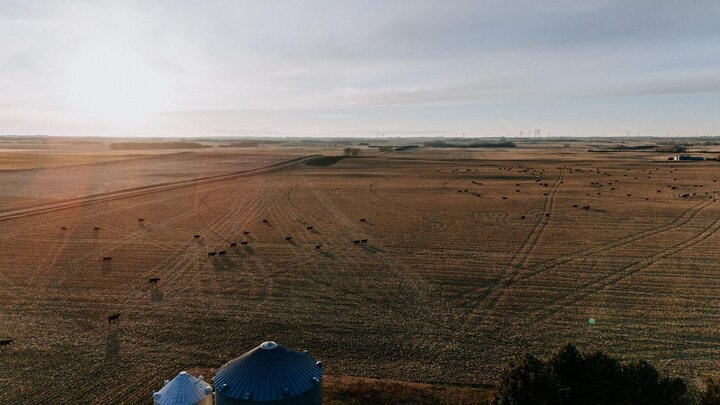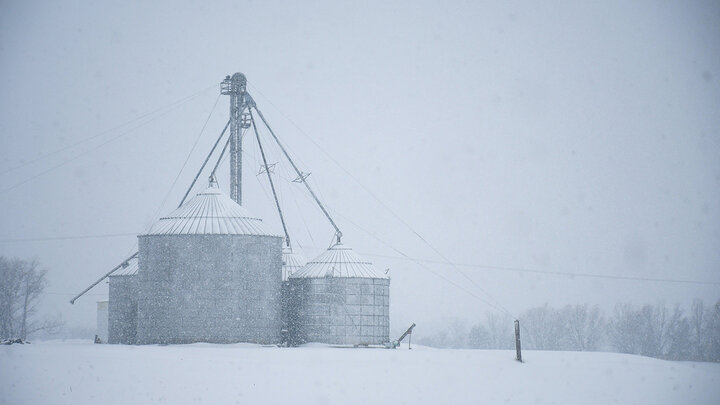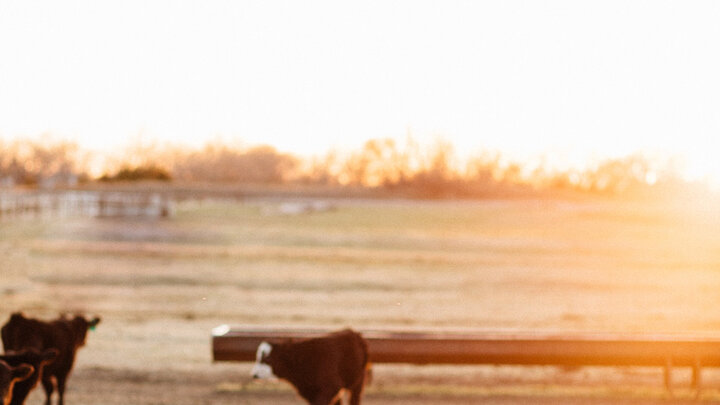For farmers and ranchers, having enough cash on hand to make purchases throughout the season (year) may not always be possible. Many producers use loans to help their businesses get the inputs and assets they need.
What is a loan?
A loan is an agreement between at least two parties, allowing money to be borrowed with the expectation it will be repaid in a pre-determined amount of time, along with an agreed upon fee. Farmers and ranchers often use loans for land, livestock, and equipment.
A loan requires at least two parties: the borrower and the lender. The borrower is the person or business who borrows the money, also known as a debtor. The lender is the person or business who loans the money, also known as a creditor.
A loan agreement must have at least three parts: the principal, term, and interest. The loan principal is the initial amount of money borrowed. The term of the loan is the amount of time it takes to repay the loan. Interest is the fee charged by the lender.
What is an operating note?
For farmers and ranchers, income is not consistent throughout the year, while expenses are ongoing. In order to be able to purchase inputs, many producers use operating loans, also known as a line of credit, to pay for expenses when they don’t have enough cash.
An operating loan is like a credit card, but often has a lower interest rate.
An operating loan is a short-term loan, often less than one year, used to help cash-flow a business. An operating loan gives the borrower a pre-set limit which they can use and pay back throughout the year. Usually, there is no limit to the number of times within the term of the loan, that the funds can be borrowed and repaid. Traditionally, operating loans are used to purchase inputs, rather than land, livestock, or equipment.
When to use a loan?
Loans are often used when someone does not have enough cash on hand to purchase an item. In the case of an operating note, expenses may come due throughout the growing season. The farmer or rancher can borrow this money from their operating note and pay the debt back when they sell their livestock or grain.
Borrowing loan funds may also make sense when the cost of the loan is low, compared to what their money is earning in another investment. For example, someone may choose a low-interest loan at 4% rather than withdrawing money from an investment account earning 8%.
What information does a lender need?
When applying for a loan, a lender may need to review the borrower’s financial documents. For farmers and ranchers, this often includes a balance sheet, cash flow budget, credit history, and tax returns.
If constructed properly, the balance sheet will tell the lender how much the borrower owns (assets), and how much they owe (debt).
A cash flow budget will help the lender understand how much money may need to be borrowed, when the borrower will need the money, and how the borrower intends to pay the loan.
Lenders will review a borrower’s credit history to determine the riskiness of the borrower and determine their interest rate. The interest is based on the probability of the borrower repaying the loan. The riskier the borrower is perceived to be, the higher the interest rate.
Finally, a lender may ask for previous year's tax returns. Principal payments are made from the profit of a business. With the information from your balance sheets and tax returns, a lender may be able to determine if your business is profitable and if you will be able to repay the loan.
Secured loans
Most loans for business purposes require collateral. These loans are called “secured loans”. Collateral can be financial accounts or property the borrower pledges to the lender as security for the loan. If the borrower fails to repay the loan, the lender has the right to seize the collateral, and sell it to recover the amount owed on the loan. Just because a borrower has assets listed on a balance sheet does not mean that all of the assets are being used as collateral on a loan. A formal loan agreement will have a specific clause identifying what assets are being used as collateral.
A lien may also be placed on collateral until the loan is repaid. A lien is a legal claim or right that a lender has over a specific asset or property belonging to a borrower. Liens are recorded in public records, such as county or city clerk's offices, to provide notice to potential buyers or creditors about the lender’s claim to the property. Once the loan is paid, the lien is removed from the property.
Unsecured loans
Some operating notes may be unsecured. Paying expenses using credit cards often does not require collateral or to be secured. Unsecured loans or credit cards will have a higher interest rate. For business purposes it is generally not advised to use credit cards for operating funds unless the business pays off the credit card balance during the card’s set grace period to avoid interest charges.
Down payments
When farmers and ranchers borrow money to purchase capital assets (machinery, equipment, land) the loan amount may not be provided to cover the total cost of the item being purchased. The difference between the loan amount and the value of the asset is called “owner’s equity”. Owner’s equity may already exist if the value of the item being purchased is higher than the loan amount. Sometimes, to create immediate equity — the difference between the value and the loan — a down payment must be made. For example, a farmer plan to purchase a piece of land. The bank or lender may require them to have a 20-30% down payment on the value of the property.
Borrowing a loan can be a useful tool for farmers and ranchers, especially to fill in gaps when cash or working capital is short to cover current obligations or to make necessary or planned capital purchases. Before signing for a loan, understand the loan terms and repayment requirements as spelled out in the loan documents.




